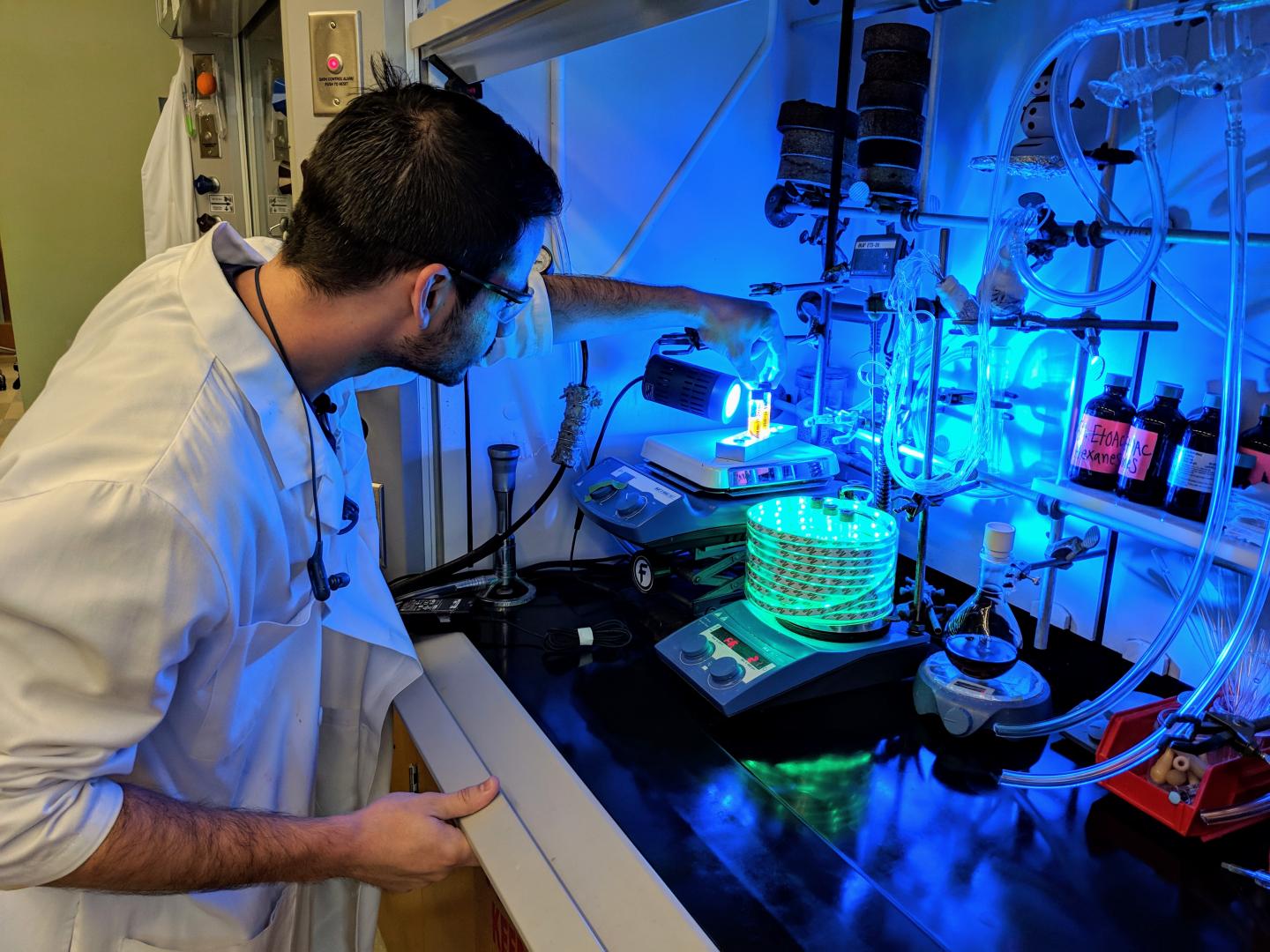
Study co-author Sean Rafferty in the Nagib Lab, where chemists develop new molecules for drug development. Credit: Jeff Grabmeier
A team from The Ohio State University has created a new way to generate the molecules used to design new types of synthetic drugs.
The researchers were able to form reactive intermediates called ketyl radicals that could allow scientists to use catalysts to convert simple molecules into complex structures in one chemical reaction in a more sustainable and waste-free manner.
“The previous strategy for creating ketyl radicals is about a century old. We have a found a complementary way to access ketyl radicals using LED lights for the synthesis of complex, drug-like molecules,” David Nagib, co-author of the new study and assistant professor of chemistry and biochemistry at Ohio State, said in a statement.
The researchers focused on carbonyls—compounds that function as a common building blocks to create potential new drugs—that were “radicalized” to become more reactive. The radical carbonyls each contain an unpaired electron that is seeking its partner.
This unique composition enables the researchers to form new bonds to create complex, drug-like products.
Ketyl radical formation previously required strong, harsh substances called reductants, such as sodium and samarium, to act as catalysts. However, reductants are also toxic, expensive and incompatible with creating medicines.
To avoid using these types of reductants, the researchers used manganese as a catalyst that can be activated with a simple LED light.
“Manganese is very cheap and abundant, which makes it an excellent catalyst,” Nagib said. “Also, it allows us to access radicals by a complementary atom-transfer mechanism, rather than the classic electron-transfer mechanism.”
While being both cheap and abundant, manganese is also more selective in creating products with defined geometries, which allows them to fit into drug targets.
Chemists usually transform carbonyl compounds through polar two-electron reactions or by adding just one electron to form a ketyl group, which is often limited by the strong reductant supplying that electron.
However, the photoactivated manganese catalyst can temporarily pull the iodine away to leave a ketyl to couple with alkynes. The iodine then returns to one of the alkyne’s carbons to stabilize the product and then remain poised for further transformations.
The new process is also able to recycle the iodine atom used to make the radical carbonyls because products that are more functional are included.
The study was published in Science.
Filed Under: Drug Discovery




